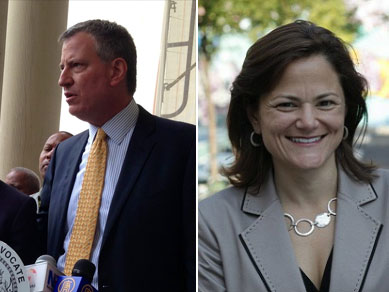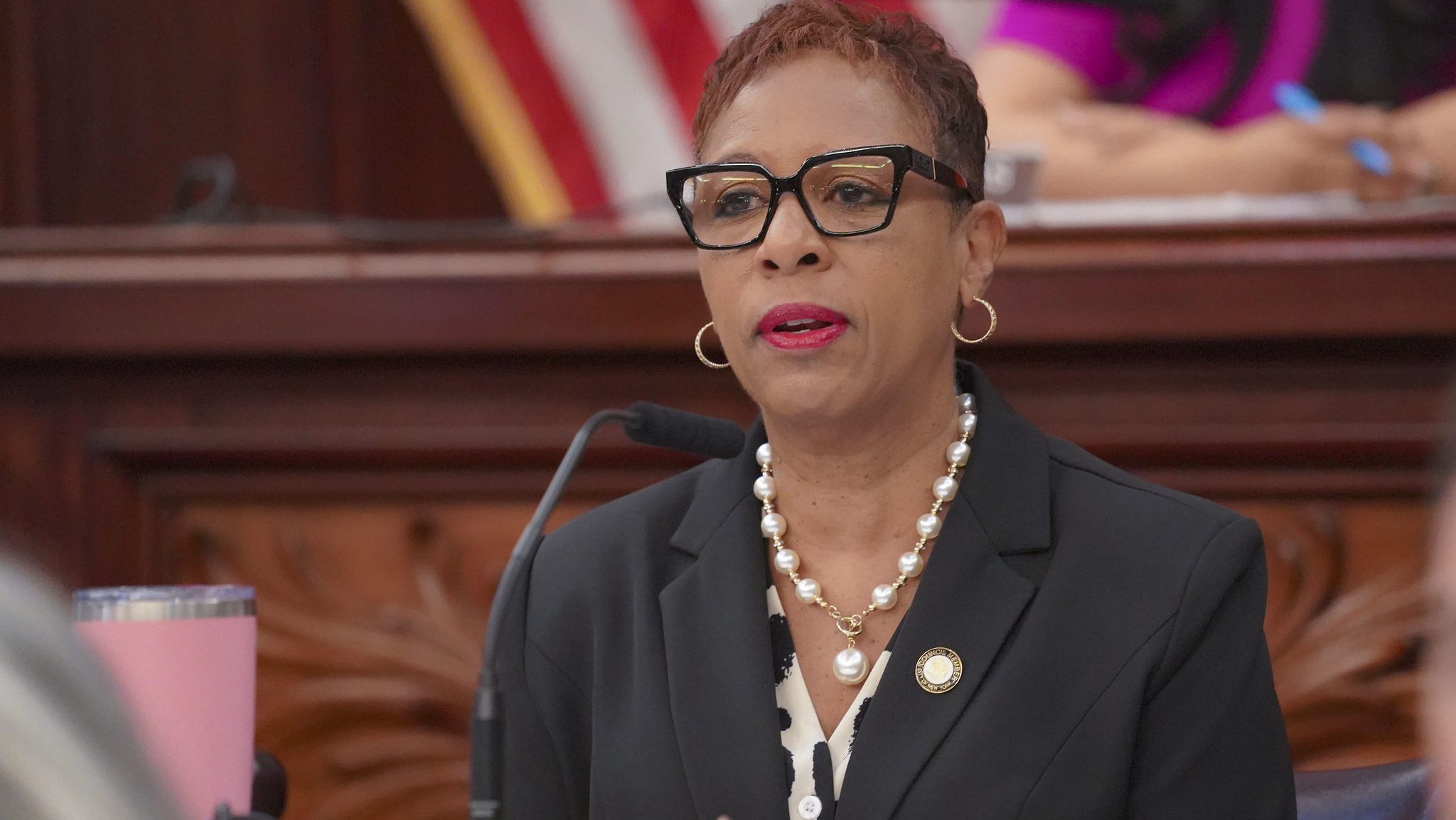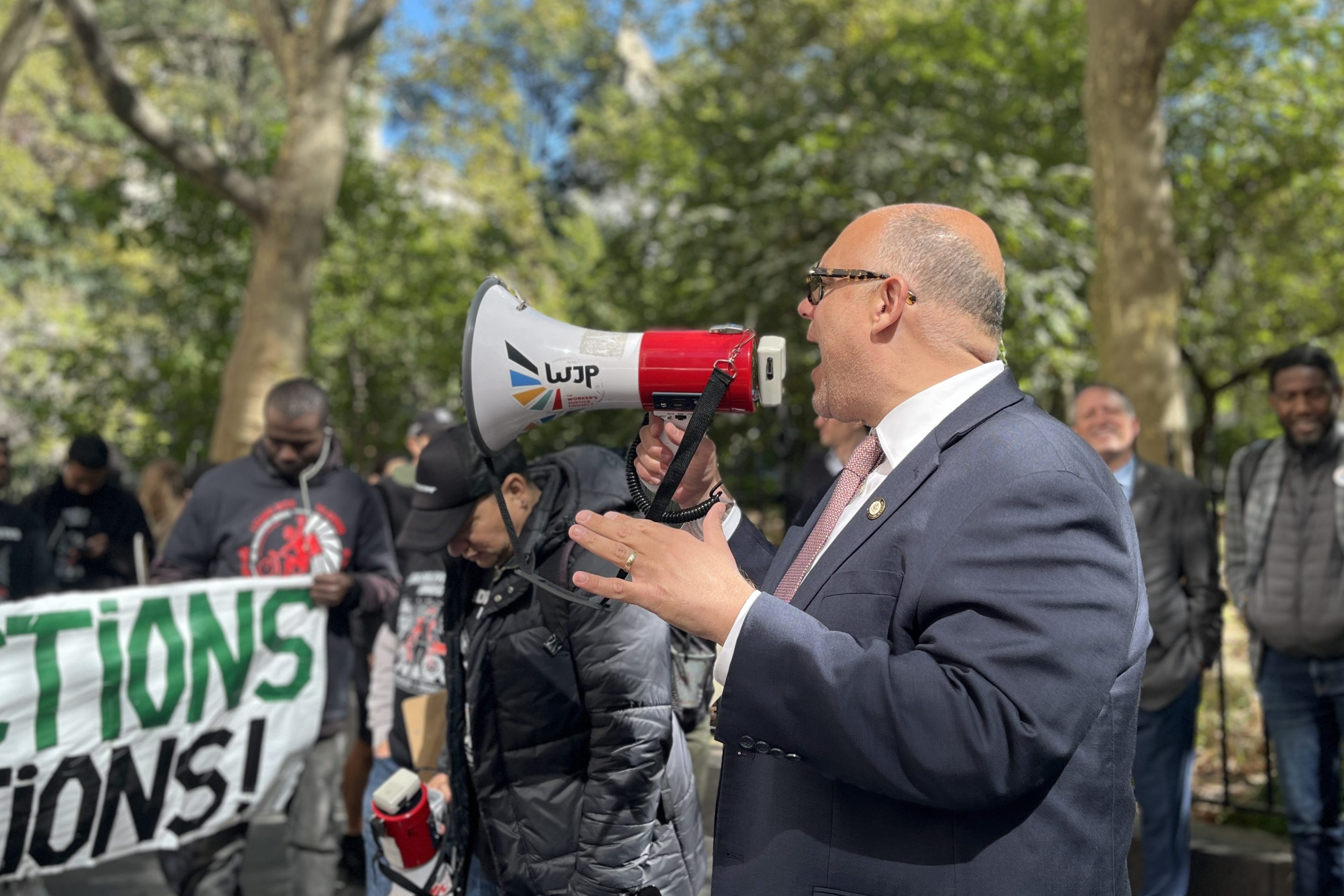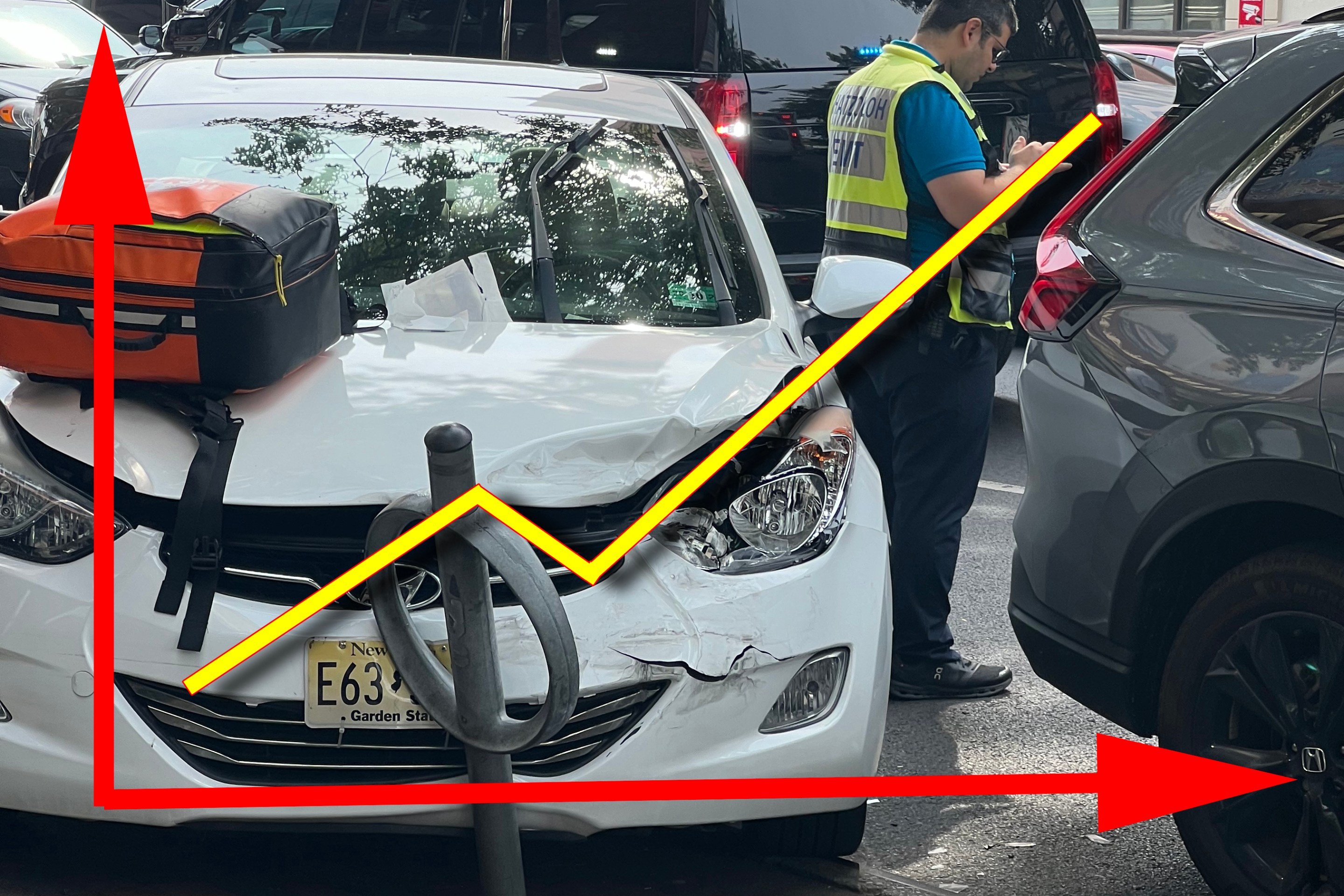City Hall will have to double its commitment to street redesigns that prioritize safety in order to dramatically reduce traffic deaths on NYC's most dangerous streets in our lifetimes, advocates say. That level of spending could be accomplished with a relatively small shift in resources in the city's total capital budget.
Transportation Alternatives has drafted a letter to Mayor de Blasio asking the administration to dedicate additional resources to redesigning the city's most dangerous streets. On Monday, more than 100 volunteers for TA and Families For Safe Streets visited council members seeking their support, and so far 19 have signed on.
Advocates want the city to both double its planned investment in Vision Zero capital projects -- permanent street redesigns cast in concrete -- and scale up its "operational" projects -- redesigns made with paint and other low-cost materials that can quickly bring down the death toll on city streets. They also emphasize the need for solid timetables for implementation, to ensure the city stays on track to meet its goals.
On the capital side, that would mean spending $2.4 billion every 10 years to overhaul the most dangerous streets. TA says that level of investment could comprehensively redesign the city's arterial streets within 50 years.
While that would represent a large increase, it would not be a large share of the city's total capital budget, which amounted to about $80 billion over the 10-year period from 2003 to 2012. A faster street reconstruction timetable could also save the city money in the long run by reducing lifecycle maintenance costs.
Mayor de Blasio's "Great Streets" initiative committed $250 million over several years for redesigns of four arterials, including Queens Boulevard and the Grand Concourse, and the preliminary City Council budget recommends doubling that amount. That would be progress, but it's no substitute for a detailed, long-term funding and implementation strategy.
Outside of the Great Streets program, for instance, DOT is planning just 50 Vision Zero projects a year citywide, some no bigger than a single intersection. That's not nearly enough to meet the need for street safety upgrades.
"Neighborhoods across the five boroughs are really clamoring for safety improvements on local streets, so there’s an unprecedented demand for what we know are proven fixes," says TA Deputy Director Caroline Samponaro. "That presents a challenge for the city, but it’s ultimately an opportunity for us to invest in what the next generation of New York City streets should look like."
In the letter to the mayor, TA calls for a comprehensive plan to redesign all arterials within 50 years, with published deadlines. Timelines should be accelerated on priority projects, TA says, and the city’s capital funding process should be changed to accommodate fast-tracked construction. In addition, DOT's short-term "operational" projects should focus on quickly improving the 443 miles of streets with the highest fatality rates, as identified by DOT's pedestrian safety action plans released earlier this year.
“If we’re going to keep the same level of reductions we saw last year in traffic crashes, and even accelerate it, we’re going to need to do more projects, and I think that’s going to require the DOT to have the capacity to do that,” says Samponaro.
Streetsblog asked the mayor's office and City Council Speaker Melissa Mark-Viverito about TA's Vision Zero budget recommendations.
“Achieving Vision Zero is a core priority for the administration," said de Blasio spokesperson Wiley Norvell via email. "From lowering the citywide speed limit, to increasing enforcement against hazardous driving, to completely redesigning dangerous corridors like Queens Boulevard, we are backing up that commitment with the resources to get results. Last year, the first year of Vision Zero, was the safest year for pedestrians since record-keeping began in 1910. We will continue to focus on these priorities. We look forward to working with the Council throughout the budget process.”
“The City Council is proud to have passed over a dozen bills to make New York City's streets safer and we will be reviewing these proposals,” said Mark-Viverito spokesperson Robin Levine in an emailed statement.






